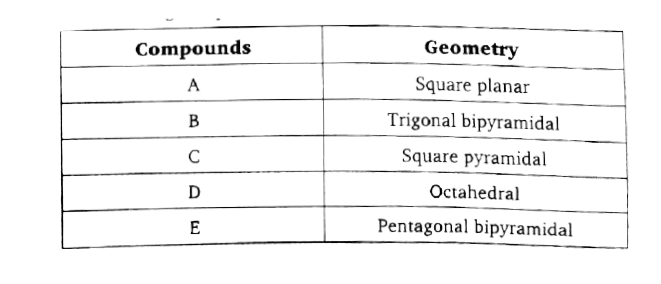AgCl on fusion with sodium carbonate, gives :
Ag2CO3
Ag2O
Ag
Ag2C2
The correct Answer is:C
To solve the question "AgCl on fusion with sodium carbonate gives:", we will break down the reaction step by step.
1. Identify the Reactants:
- The reactants in this reaction are Silver Chloride (AgCl) and Sodium Carbonate (Na2CO3).
2. Write the Balanced Chemical Equation:
- When AgCl is fused with sodium carbonate, the reaction can be represented as:
4AgCl+2Na2CO3→4Ag+4NaCl+2CO2+O2
3. Analyze the Products:
- From the balanced equation, the products formed are:
- Silver (Ag)
- Sodium Chloride (NaCl)
- Carbon Dioxide (CO2)
- Oxygen (O2)
4. Conclusion:
- Therefore, the fusion of AgCl with sodium carbonate yields silver metal, sodium chloride, carbon dioxide, and oxygen gas.
Final Answer:
AgCl on fusion with sodium carbonate gives Silver (Ag), Sodium Chloride (NaCl), Carbon Dioxide (CO2), and Oxygen (O2).
- The reactants in this reaction are Silver Chloride (AgCl) and Sodium Carbonate (Na2CO3).
- When AgCl is fused with sodium carbonate, the reaction can be represented as:
4AgCl+2Na2CO3→4Ag+4NaCl+2CO2+O2
- From the balanced equation, the products formed are:
- Silver (Ag)
- Sodium Chloride (NaCl)
- Carbon Dioxide (CO2)
- Oxygen (O2)
- Therefore, the fusion of AgCl with sodium carbonate yields silver metal, sodium chloride, carbon dioxide, and oxygen gas.
AgCl on fusion with sodium carbonate gives Silver (Ag), Sodium Chloride (NaCl), Carbon Dioxide (CO2), and Oxygen (O2).
Topper's Solved these Questions
- d-BLOCK ELEMENTSBook:VK JAISWAL ENGLISHChapter:d-BLOCK ELEMENTSExercise:Level 2
Explore 153 Videos
- d-BLOCK ELEMENTSBook:VK JAISWAL ENGLISHChapter:d-BLOCK ELEMENTSExercise:Level 3
Explore 36 Videos
- CO-ORDINATION COMPOUNDSBook:VK JAISWAL ENGLISHChapter:CO-ORDINATION COMPOUNDSExercise:SUBJECTIVE PROBLEMS
Explore 42 Videos
- ENVIRONMENTAL CHEMISTRYBook:VK JAISWAL ENGLISHChapter:ENVIRONMENTAL CHEMISTRYExercise:ASSERTION-REASON TYPE QUESTIONS
Explore 14 Videos
Similar Questions
Which of the following is known as Wilkinson's catalyst?
View SolutionIn salts of polyatomic anion, as polarising power of cation increase, thermal stability of the salt decrease and decomposed species may further undergo redox reaction
Q. Which of the followinng species undergoes non-redox thermal decomposition reaction on heating?
View SolutionConsider the following compounds with their regular geometries.

Calculate value of (x+y−z)2, where x is total number of axial d-orbitals having zero nodal plane, y and z are total no. of non-axial and axial d-orbitals respectively each one having two nodal planes used in hybridisation of central atoms of compounds A to E.
View SolutionAssertion (A) Green house effect was observed in houses used to grow plants and these are made of green glass.
Reason (R) Green house name has been given because glass houses are made of green glass.
View SolutionFusion of chromite ore with sodium carbonate in excess of air gives a compound (X) (yellow solution) X when treated with sulphuric acid gives:
View SolutionAgCl on fusion with Na_(2)CO_(3) forms:
View SolutionAgCl reacts with aqueous solution of sodium thiosulphate and potassium cyanide solutions to give :
View SolutionThe hydrolysis of sodium carbonate involves
View SolutionAgCl on fusion with sodium carbonate, gives :
View SolutionThe fusion of sodium with amine gives mainly
View Solution(E) on fusion with sodium carbonate gives (D).
View SolutionAgCl on fusion with sodium carbonate, gives :
View SolutionAgCl on fusion with Na_(2)CO_(3) forms:
View SolutionAgCl on fusion with Na_(2)CO_(3) gives
View SolutionFusion of AgCl with Na2CO3 gives:
View SolutionGive uses of sodium hydrogen carbonate.
View Solution
